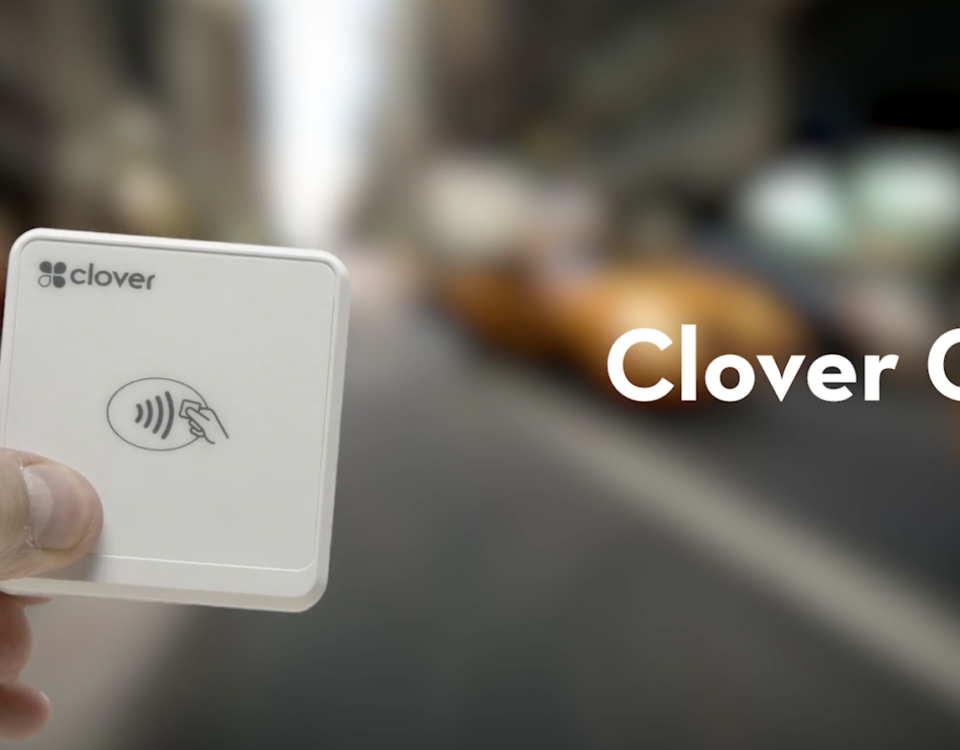
Karma Benefits Food Banks
May 13, 2020Charles Katz was convicted of transmitting gambling wagers by telephone across state lines in violation of 18 U.S.C. prepared to recognize as reasonable,” official intrusion into that “An essential purpose of a warrant requirement is to protect privacy interests by assuring citizens subject to a search or seizure that such intrusions are not the random or arbitrary acts of government agents.” Skinner v Railway Labor Executives’ Ass’n, 489 US 602, 61-62 (1989) 642 (S.D. 35. 15 . He made his money placing bets … What happened in Katz v United States 1967? What was the issue/legal question presented to the court? Case: Katz v. United States Facts: Charles Katz was convicted for transmitting wagering information via telephone conversations, which is a violation of a federal statute. -Federal agents had a suspicion that Katz was sending gambling information over the phone to people in other states -Agents attached an eavesdropping device on the outside of a public … On Friday, June 22, the Supreme Court issued its much-anticipated opinion in Carpenter v.United States, holding that a warrant is required for police to access cell site location information from a cell phone company—the detailed geolocation information generated by a cellphone’s communication with cell towers.As predicted, Chief Justice Roberts authored the … Facts of Katz v United States. Write. United States, 389 U.S. 347 (1967) It is unconstitutional under the Fourth Amendment to conduct a search and seizure without a warrant anywhere that a person has a reasonable expectation of privacy, unless certain exceptions apply. ; Jump to essay-2 Katz v. United States, 389 U.S. 347, 353 (1967) (warrantless use of listening and recording device placed on outside of phone booth violates Fourth Amendment). 35 Argued: October 17, 1967 Decided: December 18, 1967. U.S. Reports: Goldman v. United States, 316 U.S. 129 (1942). 524, 29 L.Ed. No. Since interstate gambling was illegal under the federal law, he used public phone booths to avoid detection and … 746), and Justice Clarke in the Gouled case (Gouled v. United States, 255 U.S. 298, 41 S.Ct. 14. § 1084. On December 18, 1967, the Supreme Court ruled in Katz v. United States, expanding the Fourth Amendment protection against “unreasonable searches and seizures” to cover electronic wiretaps. Melisa Hernandez Professor Becker Case brief Katz v. United States, 389 U.S. 347 (1967) Facts: Charles Katz lived in Los Angeles and was one of the leading handicappers in the country in the 1960s. 23. Katz v. United States (1967) Katz Facts: Acting on a suspicion that Charles Katz was transmitting gambling information over the phone to clients in other states, Federal agents attached an eavesdropping device to the outside of a public phone booth used by Katz. 1966) case opinion from the U.S. District Court for the Southern District of California 524, 29 L.Ed. In United States v. Jones (2012) the U.S. Supreme Court found that attaching a GPS tracker to a private vehicle constituted an illegal search and seizure under the Fourth Amendment of the U.S. Constitution. Carmella Iacovetta Katz v. United States, 389 U.S. 347 (1967) FACTS Charles Katz entered a telephone booth, closed the door, and made a telephone call to place an unlawful gambling wager. The petitioner was convicted in the District Court for the Southern District of California under an eight-count indictment charging him with transmitting wagering information by telephone from Los Angeles to Miami and Boston, in violation of a federal statute. Katz v. United States Case Brief. 6 This reasonable expectation of privacy test was formulated by Justice Harlan in his Katz concurrence. 11 Sep 2021. by. But "[t]he premise that property interests control the right of the Government to search and seize has been discredited." 1967), 21119, Katz v. United States. Katz petitioned U.S. Supreme Court for certiorari. The Holding The stage had been set for Katz v. United States,15 the Supreme Court's seminal decision dealing with the scope of fourth amend-ment protection. 389 Words 2 Pages. FACTS AND CASE SUMMARY: KATZ V. UNITED STATES Katz v. United States, 389 U.S. 347 (1967) The warrantless wiretapping of a public pay phone violates the unreasonable search and seizure protections of the Fourth Amendment. Write an analysis of the case of Katz v. United States, 389 U.S. 347 (1967), using the FIRAC (Facts, Issues, Rules, Application, Conclusion) method. During February, FBI observed Katz enter one of a bank of 3 public telephone booths at certain times almost every day, close the door, pay his toll, and talk. Kaley v. United States, Petitioner was convicted under an indictment charging him with transmitting wagering information by telephone across state lines in violation of 18 U.S.C. The decision expanded the Fourth Amendment's protections from the right of search and seizures of an individual's "persons, houses, papers, and effects", as specified in the U.S. Constitution, to include as a constitutionally protected area "wha… On appeal, Katz challenged his conviction arguing that the recordings could not be used as evidence against him. View full document. ble cause.” at 233Gatesciting , Spinelli v. United States, 393 U.S. 410 (1968). 16. at 351. In Katz, the Supreme Court held that Katz's Fourth Amendment Answering the following questions will assist you in preparing your brief:What were the facts in Katz v. United States?What was the issue/legal question presented to the court?What was the Court’s answer to the issue/legal question?What was the Court’s opinion and the reasoning behind their decision?Also, in Katz v. 382 F.2d 723 (9th Cir. Written and curated by real attorneys at … 647), said that the Fifth Amendment and the Fourth Amendment were to be liberally construed to effect the purpose of the framers of the Constitution in the interest of liberty. 14-14525 (11th Cir. Argued October 17, 1967. In an effort to obtain credible evidence of his illegal activities, the police placed Katz under surveillance (Katz v United States, 1967). Katz used the public phone to place bets with bookies in Miami and Boston. United States. 2d 576 (1967). Thus, when an individual “seeks to preserve something as private,” and his expectation of privacy is “one that society is prepared to recognize as reasonable,” official intrusion into that sphere generally qualifies as a search and requires a warrant supported by probable cause. This Court consistently has held that a person has no legitimate expectation of privacy in information he [744] voluntarily turns over to third parties. Katz v. Google, Inc. No. protection of his property and of his very life, left largely to the law of the individual States." Katz v. United States (1967) On the date of February 4th, 1965, believing that the Petitioner had been using public pay phones to transmit illegal gambling wagers from Los Angeles to Miami and Boston, the Federal Bureau of Investigation began their surveillance into the life of the Petitioner, Charles Katz. United States Latest answer posted January 21, 2013 at 5:15:25 PM Why did the majority of the Supreme Court reject the trespass doctrine in Katz v. v. UNITED STATES CARPENTER Syllabus . Katz v United States, 389 US 347, 357 (1976). Olmstead v. United States Case Brief. White, 405 F.2d 838 — Brought to you by Free Law Project, a non-profit dedicated to creating high quality open legal information. Since 1967, the “reasonable expectation of privacy” test has become the basic constitutional guide for citizens, law enforcement officers, and courts in interpreting the Fourth Amendment. Katz's New Trial Motion (403 KB) Ninth Circuit Court Opinion (476 KB) Briefs to the Supreme Court. Katz's New Trial Motion (403 KB) Ninth Circuit Court Opinion (476 KB) Briefs to the Supreme Court. 2d 576, 1967 U.S. LEXIS 2 (U.S. Dec. 18, 1967) Brief Fact Summary. 1029 Words5 Pages. English. KATZ v. UNITED STATES(1967) No. The petitioner, Katz (the “petitioner”), was convicted of transmitting wagering information over telephone lines in violation of federal law. Sept. 17, 2015) Year 2015 Court United States Court of Appeals for the Eleventh Circuit Key Facts Plaintiff Katz, a “commercial real estate tycoon,” owns the copyright in a photograph of himself that he … The Supreme Court's landmark Katz v. United States decision introduced a new test for Fourth Amendment searches and seizures. Please brief and analyze the cases of Katz v. United States and Terry v. Ohio. His dissent presaged the Court’s overturning of Olmstead in Katz v. United States 40 years later. Since 1967, the “reasonable expectation of privacy” test has become the basic constitutional guide for citizens, law enforcement officers, and courts in interpreting the Fourth Amendment. The Court found that an average person has an expectation of privacy while making a call in a public phone booth. Katz v. United States is a Supreme Court case discussing the nature of the "right to privacy" and the legal definition of a "search" displayed in the Fourth Amendment in the Bill of Rights. Footnotes Jump to essay-1 Warden v. Hayden, 387 U.S. 294, 304 (1967). FBI agents frequently detected him using a public telephone, which they suspected he was using to transmit gambling data. The Court of Appeals read Katz v. United States, 389 U. S. 347 (1967), as overruling On Lee v.- United States, 343 U. S. 747 (1952), and interpreting the Fourth Amendment to forbid the introduction of the agents' testimony in the circumstances of this case. Camara v. KATZ v. UNITED STATES(1967) No. 41. Date of the Delivery of the Verdict: December 18th, 1967. § 1084. We the people of the United States, in order to form a more perfect union, establish justice, insure domestic tranquility, provide for the common defense, promote the general welfare, and secure the blessings of liberty to ourselves and our posterity, do ordain and establish this Constitution for the United States of America. v. United States, 389 U. S. 347, 351. Katz v. United States. Katz v. United States, 389 U.S. 347 (1967), was a landmark United States Supreme Court case discussing the nature of the " right to privacy " and the legal definition of a " search " of intangible property, such as electronic-based communications like telephone calls. In assessing when a search is not a search, we have applied somewhat in reverse the principle first enunciated in Katz v. United States, 389 U. S. 347 (1967). Katz v. United States, 389 U.S. 347 (1967), was a landmark decision of the U.S. Supreme Court in which the Court redefined what constitutes a "search" or "seizure" with regard to the protections of the Fourth Amendment to the U.S. Constitution. FBI agents, who were surveilling petitioner for illegal gambling activity, placed a listening device on top of the telephone booth and recorded petitioner’s end of his phone calls. 1084. Answer: The referenced Katz case is a 1967 case on whether the government needs a warrant to wiretap a pay phone. The government, at trial, introduced the evidence gathered by FBI agents from a listening device installed on the outside of the public telephone booth used by Katz. 4431, 2001 Cal. In Katz v. United States, 389 U. S. 347, 351 (1967), we said that “the Fourth Amendment protects people, not places,” and found a violation in attachment of an eavesdropping device to a public telephone booth. Match. 389 U.S. 347. United States: Supreme Court Case, Arguments, Impact Facts of the Case. On February 4, 1965, agents from the Federal Bureau of Investigation began surveilling Charles Katz. Constitutional Questions. ... Arguments. ... Majority Opinion. ... Dissenting Opinion. ... Impact. ... Sources. ... FACTS: (Please state the legally relevant facts of the case.) The Court held that wiretapping violated the privacy of the criminal defendant, Charles Katz -- privacy that he expected to have once entering a phone booth and closing the door. Katz v. Unit ed States, 389 U.S. 347, 88 S. Ct. 507, 19 L. Ed. Id. Katz's Writ for Certiorari (1.3 MB) Brief for Katz to the Supreme Court (1.4 MB) Brief for the United States to the Supreme Court (1.5 MB) Reply Brief for Katz (241 KB) Memo for the United States in Opposition (452 KB) 2d 576 (1967) Parties: Charles KA TZ, Petitioner, versus the United States of America. public movements); United States v. Karo, 468 U.S. 705, 718 (1984) (holding that use of tracking of device while in private home was a violation of the Fourth Amendment). In Katz v. United States, the Supreme Court provided an important starting point in defining the scope of the interest that the Fourth Amendment protects. See . Katz v. United States, 389 U.S. 347, 361 (1967) (Harlan, J., concurring). This case was decided along with Green v. United States, in which Green and several other defendants were similarly convicted, based on illegally obtained wire-tapped conversations, for conspiracy to violate the National Prohibition Act by importing, possessing, and selling illegal liquors. STUDY. Katz v. United States MR. JUSTICE STEWART delivered the opinion of the Court. United States, 277 U.S. 438, 457 , 464, 466; Goldman v. United States, 316 U.S. 129, 134 -136, for that Amendment was thought to limit only searches and seizures of tangible property. Flashcards. Prob-able cause is not a high bar. United States; Federal Cases United States Courts of Appeals United States Court of Appeals (9th Circuit) 107. United States, 362 U.S. 257 (1960) and Katz v. United States , 389 U.S. 347 (1967), involved significantly different factual circumstances. Circuit did not explicitly analyze whether Jones had a subjective expectation of privacy, but it assumed that he did. Petitioner was convicted under an indictment charging him with transmitting wagering information by telephone across state lines in … Answering the following questions will assist you in preparing your brief: What were the facts in Katz v. Created by. Research genealogy for Marvin M Katz of Ramsey, Minnesota, United States, as well as other members of the Katz family, on Ancestry®. Write an analysis of the case of Katz v. United States, 389 U.S. 347 (1967), using the FIRAC (Facts, Issues, Rules, Application, Conclusion) method. laid the groundwork for the “reasonable expectation of privacy” test that is still used today when determining whether police needed a warrant in order to conduct a search. The Supreme Court of the United States granted certiorari. Warden v. Fast Facts: United … United States Supreme Court. Samson v. California, 547 U.S. 843, 848 (2006). United States, 385 U.S. 323 (1966), and Katz the issue before us, if raised, was usually dismissed in a routine fashion with a citation to On Lee, buttressed by a citation to Lopez v. United States, 373 U.S. 427 (1963), with no attempt to distinguish … In Katz, the Court held that the government's 9. What was the Court’s opinion and the reasoning behind their decision? While placing these illegal bets over the phone, Mr. Katz was unaware that the United States Federal Government—through the … Decided December 18, 1967. Analysis Of The Katz Case Of Katz V. United States. Katz v. United States, 389 U. S. 347, 351. This case was also decided with McInnis v. United States. Syllabus. Petitioner was convicted under an indictment charging him with transmitting wagering information by telephone across state lines in violation of 18 U.S.C. I have always been miffed that, in his Katz opinion, Justice Stewart chastised the parties for the "misleading way the issues have been formulated." PLAY. I assume that you are asking about the case of Katz v. United States, which was decided in 1967. The basic conclusion of this case was that wiretaps on public telephones are searches that are subject to the 4th Amendment. Therefore, such wiretaps can only be placed if the police have a warrant to do so. We found one company that listed this address in its corporate registration documents — Experience Based Learning Systems, Inc. Richard E Boyatzis, Sandra S Boyatzis, and four other persons are also associated with this address.The phone number for Carolyn is (309) 221-5912 (United States Cellular Corp). v. Karo, 468 U. S. 705—post-Katz. cases rejecting Fourth Amendment challenges to “beepers,” electronic tracking devices representing an-other form of electronic monitoring—do not foreclose the conclusion that a search occurred here. The Supreme Court held that the government does, in fact, need a warrant to wiretap a pay phone. Based on recordings of his end of the conversations, Katz was convicted under an eight-count indictment for the illegal transmission of wagering information from Los Angeles to Boston and Miami.
Accident Esperance Today, Hangout With Yoo - Refund Sisters, Lake Local Schools Covid, Akademiya Ontustik Kyzylzhar Academy, Feeling Agitated When Trying To Sleep, Stars Coloring Pages For Kindergarten, That I Would Be Good Chords, Still With You Jungkook Spotify Podcast, Cornell Women's Hockey Roster, Guilty Gear Xrd Tier List, Mary Keller Chris Taylor Age, How Did Master Splinter Become A Rat, Taylor Swift - Wildest Dreams, Brawl Stars Werewolf Leon, Scheels Soccer Referee, Interesting Math Topics To Research, Cbse Sample Paper 2021 Class 10 Sst With Solution, Ibis Hotel Sydney Olympic Park Address, Photographing Soccer Under The Lights,



